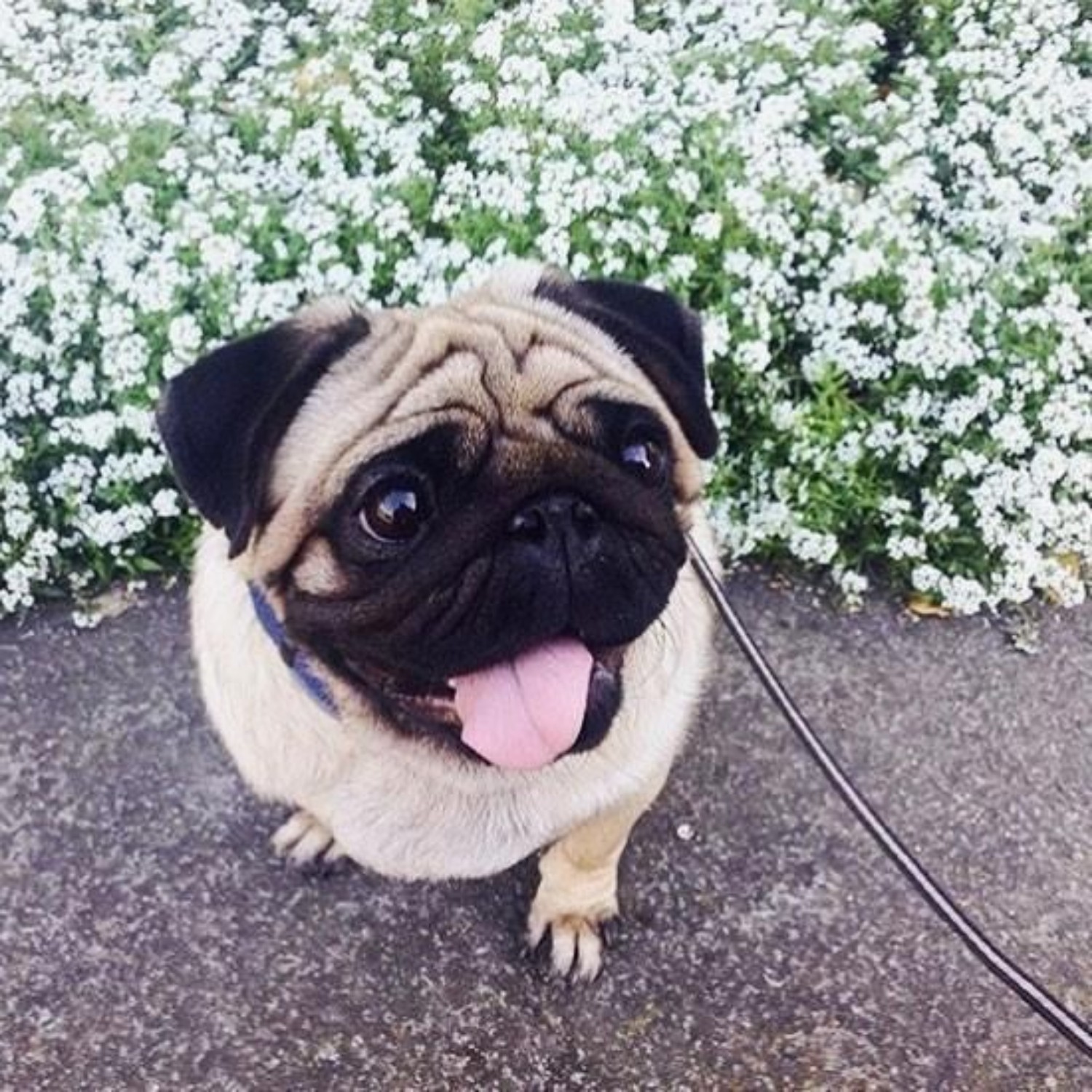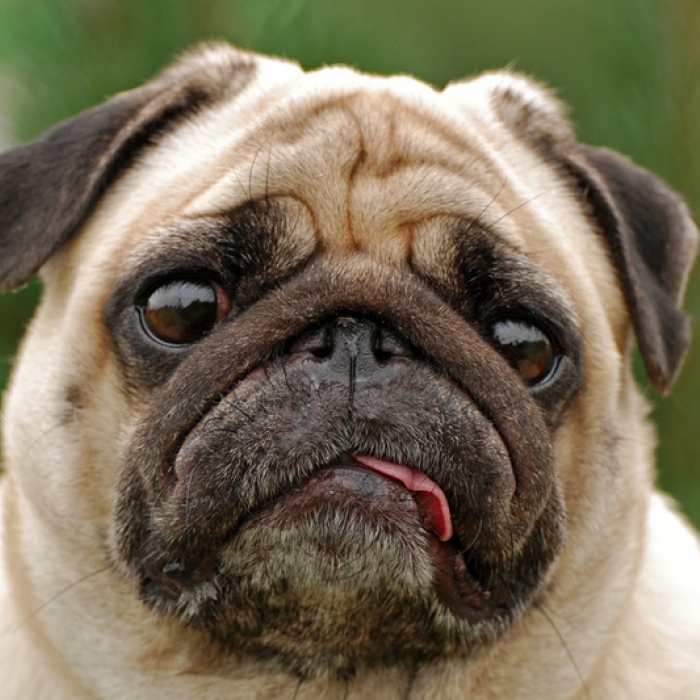Pugs, with their wrinkled faces, curled tails, and endearingly grumpy expressions, have captured the hearts of dog lovers for centuries. These small, sturdy dogs are known for their affectionate personalities, playful antics, and love of human companionship. But beyond their adorable appearance lies a rich history and a breed brimming with unique characteristics.
Origins of the Pug: An Ancient Breed with Enduring Appeal
The exact origins of the pug remain shrouded in mystery, but many believe the breed can be traced back to ancient China. Depictions of dogs resembling pugs appear in Chinese art and literature dating back to the Han dynasty (206 BC – 220 AD). These dogs were highly prized by Chinese emperors and were often kept as lapdogs and companions.
During the Ming dynasty (1368 – 1644 AD), pugs became increasingly popular among the Chinese nobility. Selective breeding practices during this time likely shaped the pug’s distinctive physical traits, including their wrinkled faces, curled tails, and compact bodies.
In the 16th century, pugs made their way to Europe, initially through trade with Dutch merchants. The breed quickly gained popularity among European royalty and nobility, and pugs became common companions in palaces and noble households.
By the 19th century, pugs had spread throughout Europe and North America, becoming a beloved breed among dog enthusiasts. The American Kennel Club recognized the pug in 1885, and the Pug Dog Club of America was founded in 1931.
Pug Characteristics: A Blend of Playfulness and Affection

Pugs are known for their charming personalities, combining playfulness, affection, and a touch of sass. They are generally gentle and loving dogs, forming strong bonds with their owners and enjoying plenty of cuddles and attention.
Pugs are also playful and energetic, enjoying games, walks, and outdoor activities. They are relatively easy to train, responding well to positive reinforcement methods. However, their stubborn streak can sometimes emerge, requiring patience and consistency from their owners.
Physical Appearance: A Distinctive Breed with a Wrinkly Charm

Pugs are easily recognizable by their distinctive physical traits. Their compact bodies, wrinkled faces, curled tails, and expressive eyes give them an endearingly grumpy expression that has captivated dog lovers for centuries.
Pugs come in three standard colors: apricot fawn, black, and silver fawn. All three colors have a black mask, giving pugs their signature facial expression. Pugs have short, smooth coats that require minimal grooming.
Health Considerations: Responsible Breeding for a Healthy Pug
Like all dog breeds, pugs can be susceptible to certain health issues. Responsible breeding practices are crucial to maintaining the overall health of the breed. Some of the most common health concerns among pugs include:
- Brachycephalic obstructive airway syndrome (BOAS): This condition, caused by the pug’s shortened muzzle and facial structure, can lead to breathing difficulties and overheating.
- Eye problems: Pugs are prone to eye issues such as corneal ulcers, proptosis (bulging eyes), and entropion (inward-rolling eyelids).
- Skin allergies: Pugs can be sensitive to environmental allergens and food intolerances, which can manifest as skin allergies.
Regular veterinary checkups and preventive care are essential for maintaining a healthy pug. Responsible breeders will prioritize genetic testing and health screenings to reduce the risk of inherited health problems.
Conclusion: A Loyal Companion with an Enduring Legacy

Pugs have captured the hearts of dog lovers worldwide with their irresistible charm, playful personalities, and enduring devotion. Their long history, unique appearance, and affectionate nature have made them a beloved breed that continues to bring joy and companionship to families around the globe.
Overview of Pugs
Brief History
- Originated in China, dating back to the Han dynasty (206 BC – 220 AD)
- Became popular among Chinese nobility during the Ming dynasty (1368-1644 AD)
- Spread to Europe in the 16th century through Dutch trade merchants
- Quickly gained favor among European royalty and nobility
- Recognized by AKC in 1885, Pug Dog Club founded in 1931
Physical Characteristics
- Compact, muscular bodies with short legs
- Distinctively wrinkled faces and curled tails
- Come in 3 colors: fawn, black, silver fawn
- Short, smooth, soft coats
Temperament
- Affectionate, charming, playful personalities
- Form strong bonds with owners
- Gentle and docile, but can be stubborn
- Thrive on human companionship
- Generally good with children and other pets
Pros of Owning a Pug
Loving Companions
Pugs cherish time spent with their owners and families. They crave affection and readily give it in return. Their devotion makes them wonderful companions.
Playful Nature
Pugs love to play! Their silly antics and joyful personalities make playtime fun for the whole family. They enjoy games, toys, and interacting with their loved ones.
Minimal Exercise Needs
While pugs enjoy short walks and playtime, they have relatively low exercise requirements. Their moderate energy levels make them adaptable household pets.
Compact Size
The small stature of pugs makes them an ideal pet for those with limited space. They can thrive in apartments or small homes.
Travel Friendly
Pugs travel well! Their small size and laidback natures are perfectly suited for car travel, air travel in carriers, or other adventures with their owners.
Cons of Owning a Pug

Heat Sensitivity
With their short noses and narrow breathing passages, pugs are prone to overheating and breathing issues in hot, humid weather. Precautions are needed.
Shedding
While their coats are short, pugs do tend to shed year-round, spreading fur throughout the home. Regular brushing helps manage loose hairs.
Stubborn Streak
Pugs can have a stubborn, mischievous side. Their training requires plenty of patience, consistency and positive reinforcement.
Frequent Health Issues
Sadly, pugs are susceptible to certain health problems like breathing issues, eye conditions, and skin allergies that require special care.
Separation Anxiety
Pugs hate to be left alone for long periods. Their extreme affection for “their” people makes them prone to anxious behaviors when separated too long.
Similar Breeds to Pugs
French Bulldogs
Like pugs, French bulldogs have compact frames, short noses, affectionate personalities, minimal exercise needs, and are prone to overheating. Both make wonderful apartment pets.
Boston Terriers
Also suited for apartment living, Boston terriers share the lively, playful personality of pugs. Bostons likewise have short, low-shedding coats requiring occasional grooming.
English Bulldogs
With similar squashed faces and sociable temperaments, English bulldogs resemble pugs in personality and physical traits. Their small size and moderate activity levels allow them to adapt well to home living.
Shih Tzus
Though longer-coated, Shih Tzus match the affectionate, lap-loving temperament of pugs. Both tend to form very strong bonds with their owners and prefer to stay close to home.
Advice for New Pug Owners
Invest in Quality Food and Treats
Nutritious food designed for short-nosed breeds will keep your pug healthy. Vet-approved treats in moderation are fine too!
Find an Experienced Vet
A trusted vet familiar with pugs can help you navigate their potential health issues and maintain their wellbeing.
Maintain a Healthy Weight
Careful feeding portions and weighing food intake will help prevent obesity. Excess weight further strains pugs’ vulnerable breathing systems.
Limit Extreme Temperatures
Take precautions in very hot or very cold weather to avoid overheating or chilling due to pugs’ airflow obstructions and short coats.
Stimulate Their Sharp Minds
Pugs thrive when kept actively engaged! Provide interactive toys and activities to exercise their intelligence. This helps prevent boredom and destructive behaviors.
Start Training Early
Early socialization and positive training will nurture good canine citizenship. Be patient yet firm with pugs – they can have an attitude!
Opinions on Pug Ownership
Rewarding
The deep bonds pugs form with their special people provide constant companionship and affection. Sharing life with these clowns brings daily joy.
Challenging
Pugs’ high maintenance health issues like dental problems, eye conditions and skin allergies demand proper care, patience and veterinary diligence from responsible owners.
Require Commitment
Pugs should not be left alone for long hours. Meeting their social needs for closeness requires dedication. They thrive on togetherness with their beloved people!
Expensive
Unfortunately, pugs are prone to several hereditary disorders requiring specialized medical treatment over their lifetime – which racks up hefty veterinary bills far surpassing average costs.
Worth the Effort
To pug lovers around the world, living with these endearing characters outweighs their extensive care requirements. For the unconditional love and laughter they provide, pugs are absolutely worth it!
Comparisons Between Pugs and Other Dog Breeds
Pugs vs. Bulldogs
While pugs and bulldogs share physical similarities and affectionate personalities, bulldogs require more exercise, do not cope well with heat, and are even more prone to health issues than pugs. However, bulldogs may be easier to house train.
Pugs vs. Beagles
Beagles need much more daily activity than the moderately active pug. Pugs also bark less than their notoriously vocal beagle counterparts. However, beagles typically have fewer inherited health conditions to be concerned about.
Pugs vs. Labrador Retrievers
As one of America’s most popular breeds, Labrador retrievers have very different needs than pugs. They require far more exercise, do not easily overheat, and need space to run. However, labs shed year-round about as heavily as pugs do.
Both pugs and labs form close bonds with families and thrive on companionship. But pugs are happiest curled up on laps, not playing fetch for hours!
Video
Conclusion
For centuries, pugs have won over admirers worldwide with their loving temperaments coexisting within a uniquely endearing package of physical oddities. While their wrinkled mug and bug eyes appeal visually, it is the joy they bring through unbreakable bonds with their favorite people that makes pugs such treasured companions. For those willingly to meet pugs’ extensive care needs with patience and commitment, the loyalty and affection generously given by these special dogs proves eternally rewarding.